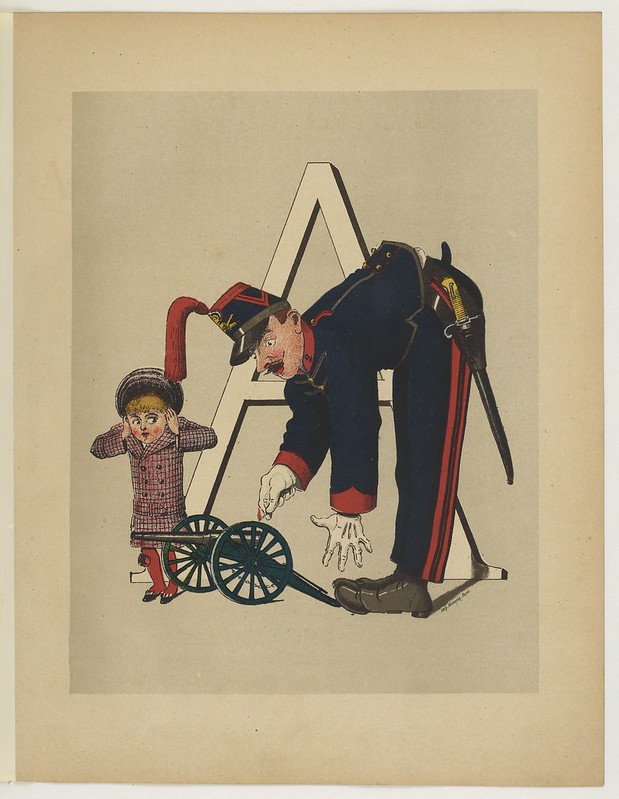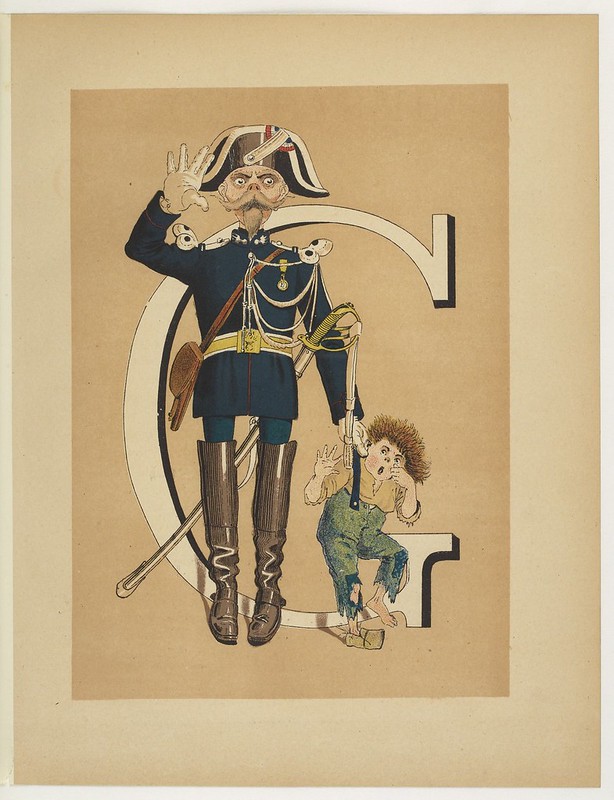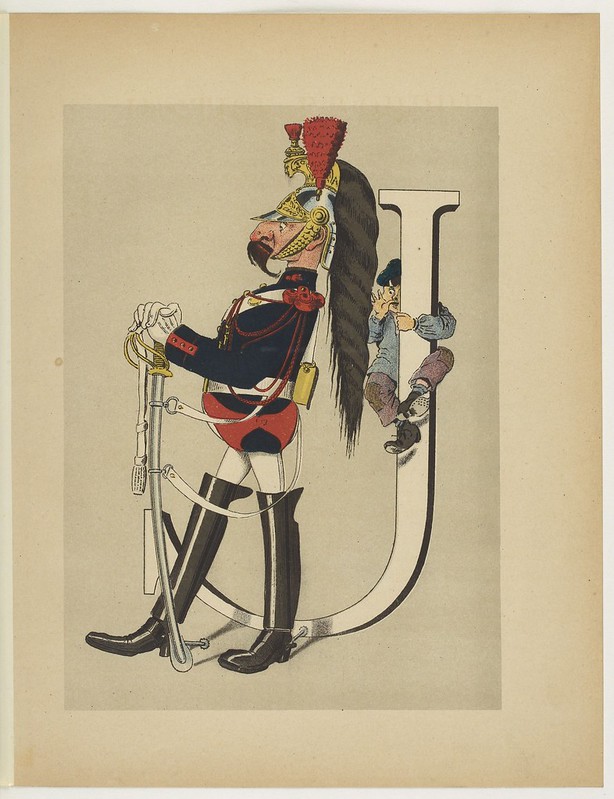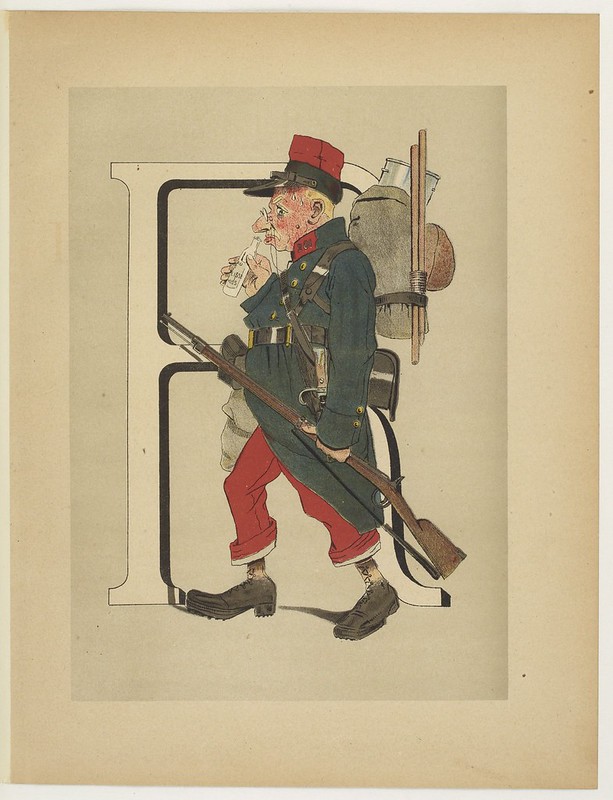'Armée Française : Nouvel Alphabet Militaire'
Text by Pierre Léon Vanier
Illustrations by Henri de Sta
This 1880s book - obviously aimed at young people - offers satirical
portrayals of various branches and uniforms of the French military and
each chromolithograph is accompanied by a page of descriptive text.

A is for Artillery

B is for Brigadier

C is for Cuirassier

D is for Dragoon
-...let the images grow at this time as the scroll passed my links on right hand side :)
G is for Gendarme

J is for Justice and Order

K is for Képi

O is for Officer

Q is for Quartier Maitre (A marine)

R is for Reservist

V is for Vaguemestre (Military Postmaster)

X is for X. Polytechnicien
[graduate of École polytechnique (aka: X), a higher ed facility near Paris]

Y is for (?) Commander of supply lines (road or rail trains)

Z is for Zouave
French illustrator Henri de Sta was born in Versailles as Arsène Henri Saint-Alary. He began his career around 1882 with La Vie Artistique and the publishing house of Léon Vanier. Coming from a family of militaries, garrison life became a regular theme in his career. De Sta worked as a humorous illustrator for Le Chat Noir since 1892. He was also present in Le Paris Bouffon (1885), Le Rire (1897) and Le Charivari (1900). He composed military alphabets, illustrated songs and produced comics for La Chronique Amusante from 1896, and for Les Contes Moraux et Merveilleux of the printing firm Pellerin d'Epinal."



